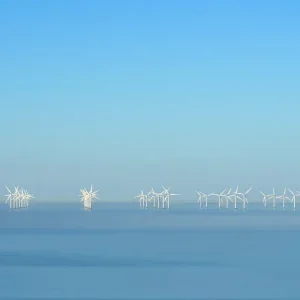The FlexFueler1 has been financed with support from the Province of North-Holland.
The FlexFueler1 will be operational from Q3 2018. The pontoon will be stationed in the Port of Amsterdam where it will serve as a stationary delivery location to inland water barges and small sea-going vessels.
Vessels that require bunkers to be delivered while simultaneously loading and discharging their own cargo, will be served by deploying the FlexFueler alongside these larger vessels throughout the ARA region, the world’s second largest bunkering hub. Titan LNG has received several enquiries for FlexFuelers in other regions, which are currently being developed.
Having the ability to deliver LNG in a range from 30 to 600 cubic metres (cbm) per hour, the FlexFueler1 is initially outfitted with two 380cbm tanks, with the option to add two further tanks in line with increasing market demand.
Titan LNG CEO Niels den Nijs, said: “Since the launch of the FlexFueler project in 2016, we have continuously incorporated feedback from key stakeholders resulting in an optimised design in terms of both functionality and safety. Our team is grateful for all feedback received during the discussions with customers, ports, the shipyard and classification society, Bureau Veritas; all of whom contributed to improving the FlexFueler design.
"We believe that our decision to build the Titan LNG FlexFueler1 will contribute to the adoption of LNG as a marine fuel in this vital bunkering region.
“The FlexFueler offers tremendous versatility when loading and delivering LNG. On top of the stationary and manoeuvrable delivery methods she can load LNG from trucks, LNG transport ships or via the Gate terminal in Rotterdam. This flexibility supports our robust delivery promise while ensuring long term cost competitiveness.”
Titan LNG commercial director of marine Michael Schaap, added: “The FlexFueler concept is the logical evolution from the truck-to-ship bunkering that Titan LNG carries out on a regular basis. We have a strong track record of making truck-to-ship as efficient as possible, but it is still far from optimal for a vessel owner because of the associated downtime.
"Our recently launched T-piece truck-to-ship operation, which allows for two trucks to discharge at the same time, already reduces the downtime. However, the FlexFueler represents a solution that resembles conventional bunkering practices, which is what the market demands.”
Revisions to IMO Annex VI will see the sulphur content of fuels burned limited to a maximum of 0.5% from 2020 on a global basis to reduce Sox emissions.
For vessels operating in Emission Control Areas (ECAs), like the North Sea and The Baltic Sea, an even lower percentage of 0.1% is applicable. This impending regulation has triggered increasing interest from ship owners and operators seeking cleaner, compliant and cost-effective fuels. LNG meets all IMO Annex VI SOx emissions standards from 2020, while greatly reducing levels of nitrogen oxide (NOx) and particulate matter (PM).






